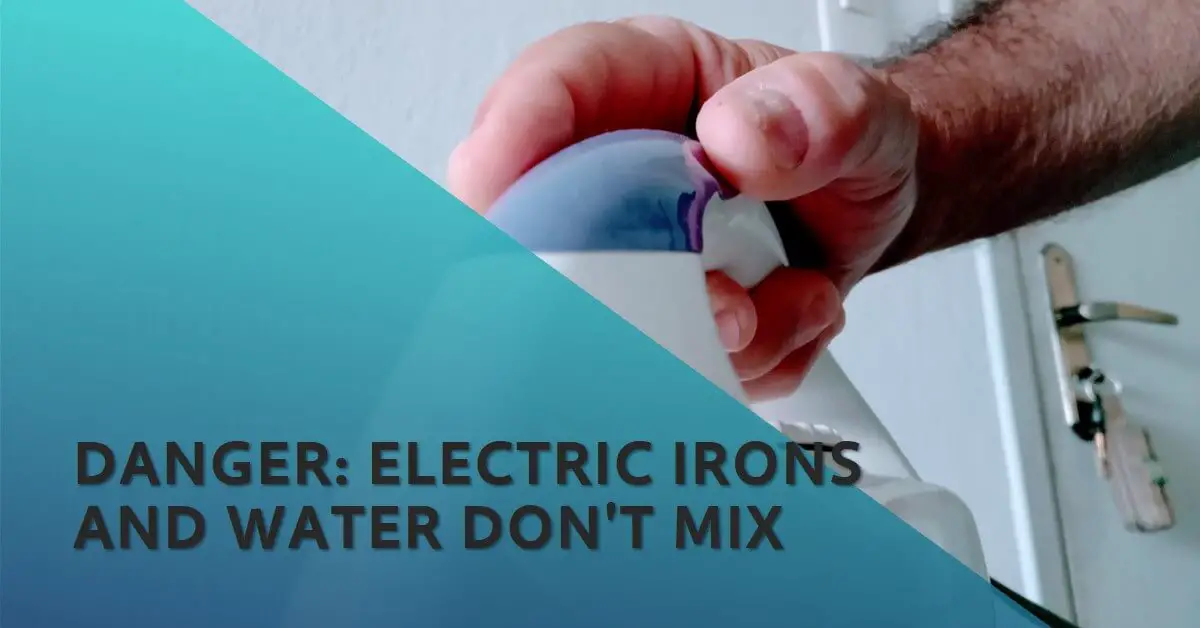Image: “Article Feature Image” by Bing, Source: [Bing Graphic Art].
Electric irons are common household appliances that make our lives easier by efficiently removing wrinkles from clothes. However, accidents happen, and one such mishap could involve your electric iron getting submerged in water.
In such a situation, it’s essential to understand the potential risks and take appropriate actions to ensure your safety and the well-being of your iron.
What Happens If My Electric Iron Gets Submerged in Water? If your electric iron gets submerged in water, it can pose serious risks due to the combination of water and electricity.
The water can conduct electricity, leading to potential electric shocks, short circuits, and even fire hazards.
Moreover, the internal components of the iron may suffer damage, affecting its functionality and safety.
Understanding Electric Irons
Electric irons consist of various components that work together to produce heat and press clothes. They typically include a heating element, a thermostat, a water reservoir, and a soleplate.
Understanding the basics of how electric irons work will help you comprehend the risks and necessary precautions.
Water Submersion and Electric Irons
Accidental water submersion can occur due to scenarios like spills, knocks, or unintentionally placing the iron on a wet surface.
It’s crucial to act promptly to minimize potential harm. Here are the immediate actions you should take:
Disconnect the Power Source: Unplug the iron from the electrical outlet or switch it off at the main power supply to eliminate the flow of electricity.
Potential Consequences of Water Submersion
Submerging an electric iron in water can result in several adverse consequences that require attention. It’s important to be aware of these potential risks:
Electrical Hazards:
- Electric Shock: Water conducts electricity, increasing the risk of electric shocks if you touch the iron while it’s still wet.
- Short Circuit: The contact between water and electrical components can cause a short circuit, leading to electrical malfunctions or damage.
- Fire Hazard: The combination of water and electricity can create sparks or heat, potentially causing a fire if not addressed promptly.
Damages to the Electric Iron:
- Corrosion and Rust: Water can cause corrosion and rust on the iron’s internal and external surfaces, compromising its durability and performance.
- Malfunctioning Components: Water infiltration can damage the thermostat, heating element, wiring, or other vital components, resulting in improper functioning or complete failure.
- Structural Integrity: Excessive water exposure may weaken the iron’s structural integrity, leading to cracks, leaks, or other physical damage.
Read also my article: Reviving Wet Electronics: Can They Bounce Back?
Steps to Follow if Your Electric Iron Gets Submerged
In the event of water submersion, follow these steps to ensure your safety and minimize damage to your electric iron:
- Ensuring Personal Safety: Avoid touching the iron or any electrical parts while it’s still wet to prevent electric shock. Safety should be your top priority.
- Disconnecting the Power Source: Unplug the iron from the electrical outlet or switch it off at the main power supply to eliminate the risk of electric shock.
- Drying and Cleaning the Iron: Thoroughly dry the iron using a soft, absorbent cloth. Wipe away any water or moisture from the surface, including the soleplate and other accessible parts.
- Inspection and Testing: Before using the iron again, visually inspect it for any visible damage or signs of malfunction. You can also perform a simple functionality test by turning it on briefly.
- Seeking Professional Assistance: If you have any doubts or concerns about the iron’s safety or functionality, it’s best to consult a professional electrician or contact the manufacturer’s customer service for guidance.
Prevention and Precautionary Measures
Prevention is always better than dealing with the consequences. Consider these tips to avoid water accidents with your electric iron:
- Keep Water Away: Keep the iron away from sinks, buckets, or other water sources to minimize the chances of accidental water submersion.
- Utilize Safety Features and Devices: Choose an iron with built-in safety features like auto-shutoff or cord storage to reduce the risk of accidents.
- Regular Maintenance and Cleaning: Clean your iron regularly as per the manufacturer’s instructions to prevent the accumulation of mineral deposits or other residues that can affect its performance.
Read also my article: When Water Meets Power: The Dangers of Spilling on a Power Strip.
Conclusion
Accidentally submerging your electric iron in water can lead to various risks, including electrical hazards and damage to the iron itself.
By promptly disconnecting the power source, drying the iron, and seeking professional assistance if necessary, you can mitigate potential harm.
Remember to prioritize safety and consider preventive measures to minimize the likelihood of water accidents.
Want to learn more about electricity? Check my YouTube channel!
Are You An Electrical Engineer or Electrician?
Install my Free On Google Play Now! It’s 100% Free
The staff I recommend (Amazon Affiliate Links to products I believe are high quality):
- Economy 120 Volt/60Hz AC Power Source – Step-Down Voltage & Frequency Converters 1800W
- UNI-T Digital Multimeter Tester UT139C
- 50-Amp Extension Cord for RV “100ft”
- Voltage Stabilizer 110/220v
- Hair Dryer “best selling“
- TOSHIBA EM131A5C-BS Countertop Microwave Ovens
Disclaimer: This contains affiliate links to Amazon products. I may earn a commission for purchases made through these links.

